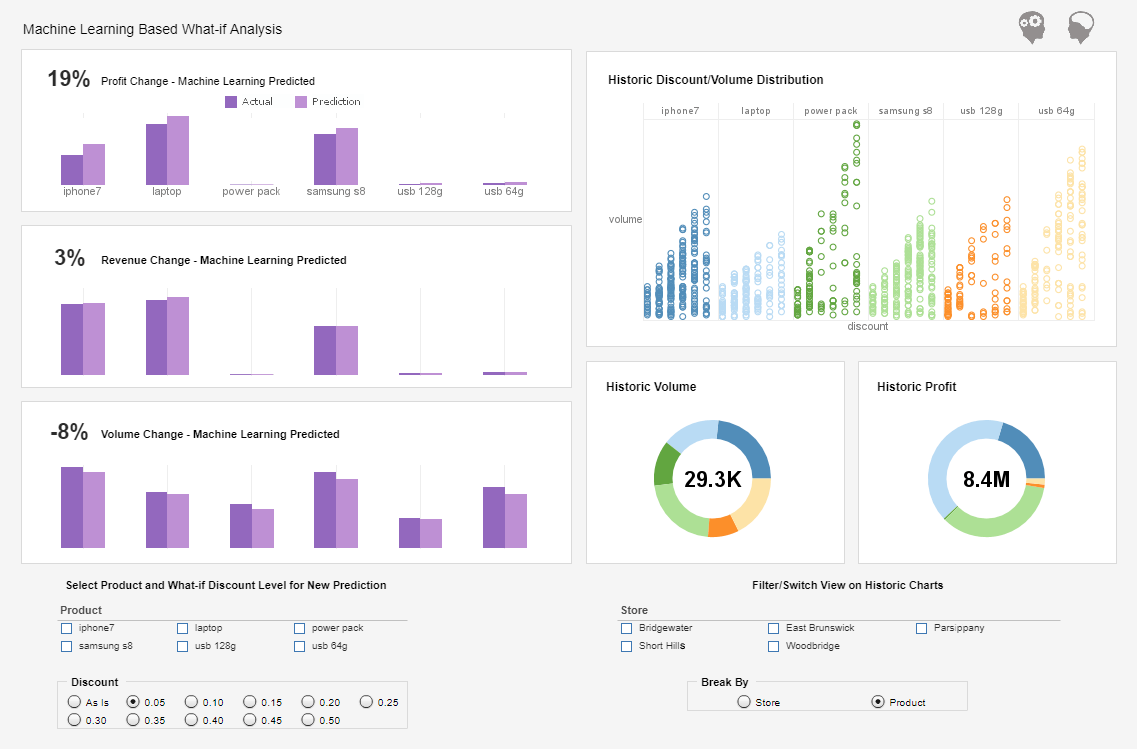Tips on Successfully Transitioning Into and Deploying Operational Business Intelligence
This is a transcript on "Facing the Challenges of Operational BI" hosted by InetSoft. The speaker is Jessica Little, Marketing Manager at InetSoft.
We are here today to talk about operational business intelligence, or BI, what also people call enterprise intelligence. We certainly see more and more companies finding a critical role for BI in their day-to-day decision making, and this isn't just in their strategic planning as it may have been in the past.
The technology needed to support this new form of BI is ready today, but it appears that the hardest part of enterprise intelligence may be the so-called soft issues, the areas that many listeners may not have considered. Let’s talk a little bit about the different kinds of BI?
I think most people are probably familiar with strategic business intelligence. That’s been around a long time. That was the early kind, and it’s still very popular today. It is the type of business intelligence that we have been implementing forever. These are the more historical analytics achieving long-term organizational goals by looking at trends and patterns, multidimensional analysis and so forth. The data is typically anywhere from a day to a week to a month to even the year or more in terms of its age.
What's changed is the focus to get it closer to real time. That’s what we are calling operational BI. In this case, we are managing daily operations. We are integrating our business intelligence with operational systems. And I think it's interesting to know the difference in these two, strategic versus operational BI from a project management point of view, too.
Look at Strategic Business Intelligence
If we look at strategic business intelligence, back in the day we built our own little world. We extracted data out of the operational systems, and we built warehouses and datamarts, and all of these things were completely disconnected from the operational environment on purpose, and it really helped us.
We could create strategic decision-making environments without any impact to the operational systems. But I think that’s changed now with operational business intelligence. No longer can we put a wall up, if you will, between the operational side of the house and operational business intelligence.
For operational BI, what should decision makers really be prepared to address? What are the challenges to successfully deploying operational BI? The wall is certainly a great concern. Again, that wall has gone away as we have been talking about operational BI. It is not possible with operational business intelligence.
It's also used by a very different audience. We are talking about operational people now and not traditional analysts. By its very nature, operational BI has to be made more actionable in order for it to be useful by the operations personnel, as well. And by actionable, that means it has to be embedded into their everyday workflow, if you will, or their everyday processes.
The traditional audience, as we all know, for business intelligence who have been the business analysts and many times the executives who are interested in being able to analyze this historical information, they really were not focused on current or real time or in this case near real time data.
Operational BI is really different. We are opening the doors to a much broader audience now, many more operational types of personnel, a much larger audience including line managers, for example. Customer service reps are good example of operational personnel that would use operational BI, and other front line personnel.
They wouldn’t have the same kind of training and background, for example, as analyst who may have been a more strategic user. They are not used to using analytics. They have never used them in many cases. So we are talking about a whole different audience and a whole different field.
Bridging the Gap
The people that are responsible for the business intelligence implementations themselves may not be very knowledgeable themselves about the operational processes and requirements as well. So we have got a gap not only on the operational side but also on the BI implementation side.
One of the key factors in transitioning to operational business intelligence is fostering collaboration between IT and business units. Operational BI requires a deep understanding of day-to-day business processes, so it’s essential for technical teams to work closely with operational staff to ensure that BI solutions are relevant and actionable. This collaboration helps bridge the gap between data and decision-making, making it easier to embed analytics into workflows and drive real-time insights.
Another important consideration is user adoption. Since operational BI targets a broader audience, including those who may not have prior experience with analytics tools, it’s crucial to focus on usability and training. Providing intuitive interfaces, clear documentation, and ongoing support can help users feel comfortable with new BI systems. Organizations should also encourage a culture of data-driven decision making, so employees understand the value of leveraging BI in their daily tasks.
Finally, organizations must address data integration and quality challenges. Operational BI relies on timely, accurate data from multiple sources, which can be difficult to manage. Establishing robust data governance practices, automating data pipelines, and regularly monitoring data quality are all essential steps. By ensuring that data is reliable and accessible, businesses can maximize the impact of operational BI and empower their teams to make informed decisions quickly.


